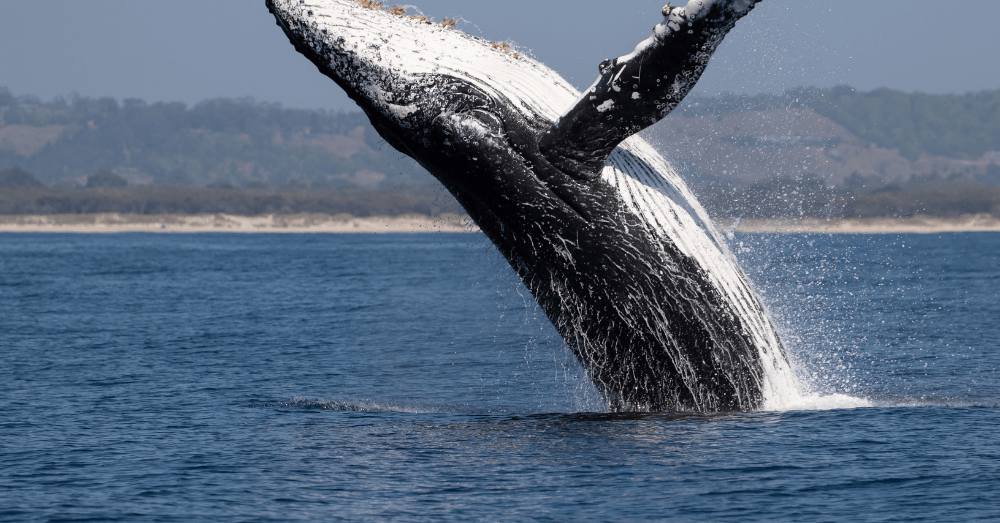
Viral news stories in the 1970s didn’t often come from local stations, but one event made the news across the country when a whale washed up in Oregon.
Whales washing ashore after dying or dying once they arrive aren’t an uncommon
occurrence along the Pacific Coast, but it doesn’t happen every day. In fact, it had been
many years since a whale washed ashore in Florence, Oregon, before the local highway
crew worked to figure out what to do with the massive sea mammal. On November 9, 1970,
a 45-foot sperm whale washed ashore on the beach near Florence.
Local news crews filmed the whale
To give those who can’t imagine the time a bit of context, there were no cell phones or
smartphones in the 1970s. Social media was decades from becoming a reality in the world,
and most people only received news information a few times per day. Local stories were
usually featured during the nightly news, and most local stories didn’t receive nationwide
attention, but this story in Oregon certainly did. This meant a news team, with a reporter
out front with a microphone, headed to the site to cover the story.
The whale began to smell
After the whale washed ashore, local highway crews worked to figure out how to handle the
washed-up marine mammal. It was three days later, on November 12, when they finally
hatched a plan that spurned the viral video clip that was shared and spread long before
viral videos were a real thing. Local residents of the nearby town had come to see the whale
carcass and admire it, but after three days on the beach, the whale had begun to smell.
Thankfully, a plan was hatched to handle the issue.
Blow it up
Because the town hadn’t had a whale wash up in several years, they had forgotten how to
handle this situation. George Thornton of the State Highway Division was in charge of
disposing of the whale and chose to blow it up using dynamite. Because the whale couldn’t
be cut up easily, and it couldn’t be buried, the idea was to blow it up, hopefully
disintegrating the carcass into enough small pieces that scavenger species, such as
seagulls and crabs, would eat the small pieces left over, and the whale would be gone.
The plan seemed good, and the team prepared to blow up the whale. They dug the leeward
area around the whale to ensure much of the carcass would be blown in to the ocean
where small pieces could wash away. This seemed like a good idea that could work, and
the highway team was pretty confident in how it would go. Unfortunately, it didn’t go as
expected.
The whale fallout, literally
The highway team moved spectators back at least a quarter of a mile to ensure they were
out of the blast area. What happened next was completely unexpected, somewhat
comical, and dangerous. The whale exploded, but it did not disintegrate as expected. It
also did not get blown mostly out to sea, either.
Instead, many large chunks of the whale flew high into the air, creating a dangerous
situation. People who were nearby, including the local news crew, were covered in dead,
smelly whale carcass; large chunks were in the air, causing pieces of the animal to fall all
around, and a nearby car was damaged by a large chunk that fell on the roof, causing the
cabin area to be smashed.
The worst part of the entire situation was the remaining large carcass that was still located
on the beach. This meant the highway crew had to clean up the area and still find a way to
dispose of a large carcass that remained behind after the explosion.
Remembered as the viral video
The news reporter from this story , Paul Linnman said after this event occurred, he was
asked about the incident virtually every day. He said that strangers would stop him at
Starbucks at 7am and ask about the whale, expecting to be the first of the day, but many
times that wasn’t the case.
Paul Linnman covered several other amazing stories, such as Presidential races, race riots,
and other social-political events, but the whale story was the one that lived on the longest.
Eventually, he wrote a book about the whale story but used that book to talk about some of
the other stories that he covered in his life.
Why blow up the whale?
George Thornton, the leader of this disastrous event, had consulted with the United States
Navy, which had disposed of beached whales in this manner in the past. The general
consensus, after the explosion, was that not enough dynamite was used to cause the way
to disintegrate as desired. The amount used was about half a ton, but that didn’t do the job
of disposing of the whale.
The news story from a small-town local station became a nationwide event that was a huge
part of Linnman’s life. It took him a while to get over the fact that other stories weren’t
nearly as memorable, but eventually he did. Today, viral videos seem to happen every day,
but back in 1970, they weren’t nearly as common, unless you had a dead whale being
exploded by dynamite that goes wrong.
This post may contain affiliate links, meaning we may earn a commission if you make a purchase. There is no extra cost to you. We only promote products we believe in.






